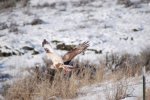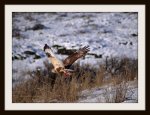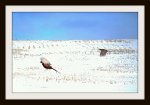LOVEMYLABXS
Senior Member
Moving away from the auto setting what makes you decide what F stop you want to use? Ok I know that bright days and non-moving targets you can use an Fstop of say F-22 or higher and a slower shutter speed and not be to dark or open the the F stop up and slow down the shutter speed to basically get the same contrast but is there a reason why you'd use say F-22 and say 1/1000 over opening the opening to F-4.8 and a slower shutter speed and say 1/400 or less on the speed? Does distance to target come into play or does it matter if you just want your target subject in focus or if you want to also show the background?
I'm wondering cause the other day on one of my drives I messed up and know basically why the shots didn't turn out but didn't have time to make changes but is there a intermedite setting?
Beings it's winter and a lot of white alot of things come into play and sometimes you just got to be QUICK to change settings on the camera.
But over all does a larger opening (lower F-stop) or smaller opening ( higher F-stop) give you more background sharpness or less? Sometimes you just don't have time to switch settings.
2 shots that didn't run out but had I had time to adjust could have been pretty darn cool. 1st one flyin pheasants and the second a pheasant that should have flown faster
I'm sure of why neither turned out but what settings would you have'd picted?
I'm wondering cause the other day on one of my drives I messed up and know basically why the shots didn't turn out but didn't have time to make changes but is there a intermedite setting?
Beings it's winter and a lot of white alot of things come into play and sometimes you just got to be QUICK to change settings on the camera.
But over all does a larger opening (lower F-stop) or smaller opening ( higher F-stop) give you more background sharpness or less? Sometimes you just don't have time to switch settings.
2 shots that didn't run out but had I had time to adjust could have been pretty darn cool. 1st one flyin pheasants and the second a pheasant that should have flown faster

I'm sure of why neither turned out but what settings would you have'd picted?
Attachments
Last edited:




